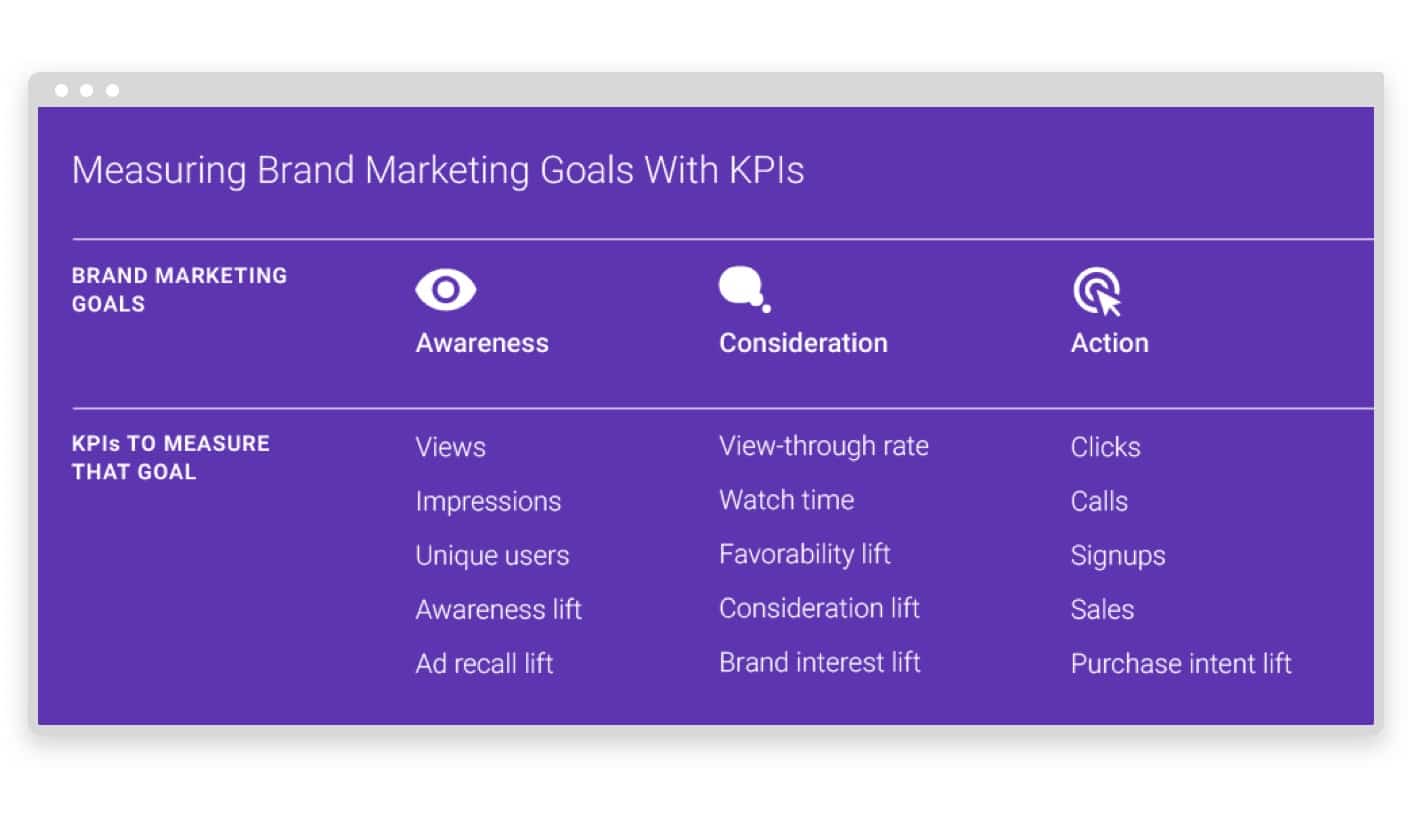
How to measure the effectiveness of your video ads
You know that videos are the future of marketing. You’ve created, shared and boosted them on popular advertising platforms. You believe that you’re doing everything you can to boost your business with the power of video ads. But let me ask you, how much revenue do your PPC and video ad campaigns generate?

While you might have known, the unfortunate reality is that many people who practice video marketing are not measuring their results. What is even worse is that oftentimes, the person measuring is — unbeknownst to them — looking at all the wrong metrics which gives them the wrong answer to the right question.
We don’t want that to be you.
Measuring ad effectiveness
Let’s play out a scenario real quick.
Say that you have a couple of thousand dollars that you want to invest in the stock market. So you do some research, find a good stockbroker, and then go right on with investing your money.
Now the question is what do you do next? Do you just keep throwing money into stocks without ever checking how your investments are performing? Or do you watch your investments carefully and move things around when you notice the need?
We’d all like to say we’re the latter but when it comes to PPC, many businesses actually end up going the first route.
They keep throwing money at paid video ads and they rarely (or never) stop to measure their ad’s effectiveness and how much income this investment is making them in return.
If that’s the case, you’re basically throwing away money.
90% of start-up businesses fail with the second most common reason for this being that they ran out of money.
The point we’re trying to make is this:
Whether or not you’re measuring the impact that your ad spend has on your revenue can be the difference between building a thriving business or shutting your doors.
Mining all that data and engagement can feel daunting, but as you start to match the metrics to your results, then learning to navigate these digital waters becomes much easier with time.
Our Video Metrics Guide covers the 10 most important metrics and the steps you can take to continually improve your performance.

It’s a great resource so be sure to bookmark it for future reference.
But keep in mind that there is one very common mistake that you could be making, but it’s so subtle that even seasoned marketers can miss it.
How to know if advertising is effective
Since your marketing strategy has so many moving parts, it can be hard to get them to come together congruously. To keep from getting lost in the noise, you’ve got to get back to basics and focus on your actual goals, metrics, and KPIs (key performance indicators).
Without clear KPIs it becomes easier for different parts of your marketing strategy to overlap, and easier to overlook where something might be lacking. For example, a mistake we’ve all made at one point or another is using the same benchmarks from our social media strategy and applying them to our PPC campaigns.
The goals, metrics, and KPIs that you apply to your PPC ads are not the same as those of your social media strategy. Here’s why.
KPIs and goals: Social media vs. paid advertising
First, we should establish what a goal is in comparison to a KPI. These are often used interchangeably, but they’re not the same thing.
- A goal is your target; it’s what you are aiming to accomplish.
- A key performance indicator (KPI) are various metrics that you look at and measure to see how you are progressing to meet your goal and if you need to tweak or even stop your ad.
So the next questions we should ask is what would be appropriate goals and KPIs for your social media? And what would those be for a paid ad campaign?
Goals and KPIs for social media
For strictly organic social media marketing, these are some common goals:
- Brand engagement
- Social brand reach
- Drive more traffic to a certain page
You could then set these as your corresponding KPIs:
- Number of likes, comments, shares on social media content
- Number of followers you gain/lose
- Number of people that come to your site directly from your socials
The interesting thing about the goal for social media is that you can create a strategy that works on all of your goals at once. In fact, you should be doing that since it gives you a better view of how your efforts are progressing.
Goals and KPIs for paid ad campaigns
Broad goals for PPC campaigns and video ads usually fit into 3 brackets of your marketing funnel:
- Brand Awareness (Top of the funnel)
- Consideration (Mid funnel)
- Action/Conversions (Bottom of the funnel)
These are some common KPIs for these campaigns types of goals:
- For brand awareness campaigns, measure likes, comments, shares, clicks, and cost-per-impression
- For consideration, track and measure an increase on branded searches, click-through rate, and cost-per-click
- For conversion, track click-through rate, quality score, and your return on ad spend
These are examples to help you get started. And as you test things, you may find that what works to help you gauge PPC success will be different from what is listed here.
Awareness campaigns vs. conversion campaigns: How goals and KPIs can change
Now, notice how the closer you are to the top of your funnel, the more similar the KPIs for PPC look when compared to social media. But further down the funnel, the KPIs shift because of your goal changes as does your target audience, their awareness, and their intent to purchase.
Here’s an example:
Let’s say you want to run an awareness-based campaign. To do this, you host a giveaway and set up an ad to target an audience who is not familiar with your brand yet. Your KPIs for this ad would be to increase traffic to your website by a certain amount.
So you’d measure metrics such as likes, comments, shares, branded mentions, click-through rate, site traffic, and email signups.
A lot of those metrics are similar to what you’d be tracking for your overall organic social media efforts. But, for this type of ad, measuring these metrics for your KPI will help give you a better idea of how this sort of ad is working toward the goal of increasing your brand awareness.
With a conversion-based ad, your goal is revenue instead of awareness. Therefore, your ad will target a primed audience who know you and more likely to convert. For this ad, you can set a KPI of lowering the cost-per-acquisition (CPA). To do so, you would measure your Quality Score and tweak ads or split test them to find the one with the lowest cost and highest yield.
That’s a very wide look at things, but it’s simply to illustrate that as you move down the funnel, the KPIs should change to meet the expectation.
Your ad type can change KPIs too. When you swap out regular imagery for video-specific ad campaigns, there are usually some changes needed on your KPIs here too since video opens up new metrics that are important for campaign success.

Source: Think with Google
Metrics like video views, view-through rate, watch time and video replays are all new and valuable KPIs that come into play with video ads.
While social media and ad campaigns often walk hand-in-hand in many respects, they have different roles in how they impact your business. Those differences require us to shift our view and set different KPIs for them.
So what metrics measure the effectiveness of our ad campaigns?
Measuring ad effectiveness: The most important metric to measure is sales
All brands share one umbrella goal: To make more revenue.
More specifically, you want to be making more money than you’ve spent on your ads. PPC and video ads are naturally considered money-makers. But, if we’re not looking at the right metrics, our answer to how much revenue we’re actually gaining from these channels can be wrong. So what gives us the answer we’re looking for?
The answer lies in your Return On Ad Spend (ROAS).
Broadly speaking, the goal of ads is to make back more money than what you’ve invested. Measuring your ROAS allows you to find out exactly what that dollar number is.
The formula is this:
Campaign Revenue / Ad Costs = ROAS
For example, if your revenue from one campaign was $5000 and you spent $1200 in ads, then your return on ad spend is roughly $4.17 for every $1 spent.
Many platforms will help you put this calculation together. Here’s how you can find it or set it up on for Facebook, Instagram, and Google.
Pro-tip: You need to calculate ROAS on each individual ad campaign you run and not on all of your campaigns as a whole. By taking these on one at a time, you’ll find which ads are the most successful thus allowing you to delegate your advertising budget more efficiently.
To make your ads continually effective, continue to measure and test
The end result for effective ad campaigns and video ads alike should be that they are making your business money. By keeping track of your ROAS you can make sure you’re not simply throwing money into ads just for the sake of it.
So, continually track and measure your return on your ad spend. Ads can stop performing or prices can increase due to the time of year or changes in a platform. Use a video maker, like Promo.com, that would allow editing of video ads that’s simple to use and is cost-effective.
Paid ads are never a set-it-and-forget-it type of marketing channel. You have to constantly poke and prod the data to find your cash cows. Even though this will take time, learning how your money is working towards growing your brand is a vital part you undoubtedly care about.
You’re already invested in paid ad campaigns. Now’s the time to make sure they’re working.



